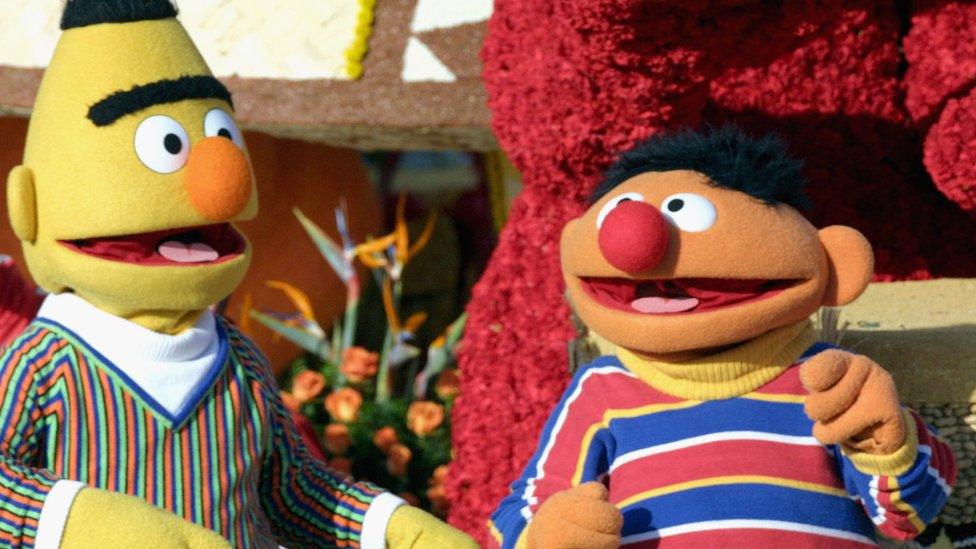Sesame Street at 50: Five defining moments
- Published
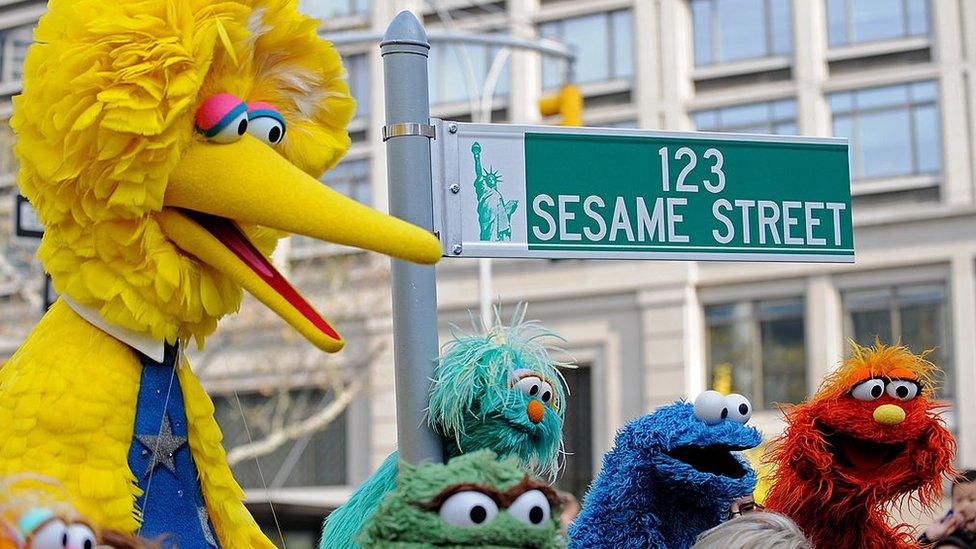
Sesame Street has produced nearly 5,000 episodes, won 193 Emmy awards, and now broadcasts in 150 different countries. But these five milestones in its first 50 years say so much about its success.
Since first airing on television on 10 November 1969, millions of children have grown up hearing the classic theme tune "Can you tell me how to get, how get to Sesame Street?"
Over that time it has undoubtedly changed early childhood education around the world.
Here's how.
It all began at Harvard...
In the late 1960s Sesame Street co-founders Lloyd Morrisett and Joan Ganz Cooney approached Harvard University's Graduate School of Education with a novel approach to teaching American children.
A team led by a developmental psychologist worked with the Sesame founders to analyse childhood psychology and harness the relatively new medium of television to create entertaining lessons for children.
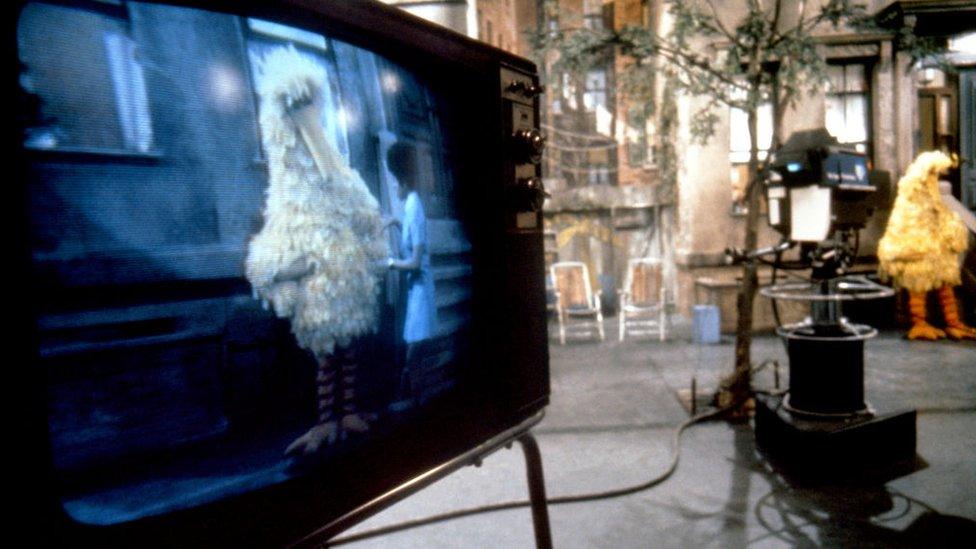
The filming of an early episode in 1970
They tapped Muppets puppeteer Jim Henson to create characters like Big Bird and the set was made to look like an urban street rather than a magical world. And the four human cast members were multi-racial - a landmark decision for the era.
Harvard Education Professor Joe Blatt, who was a consultant on the show, says the concept of using TV - which was then thought to engender only laziness and bad habits in children - was a "brilliant and kind of daring and exciting move" for 1969.
Prof Blatt says the programme used "powerful media strategies like [advert] jingles, like repetition, to do things that help kids learn instead of making kids want Frosted Flakes".
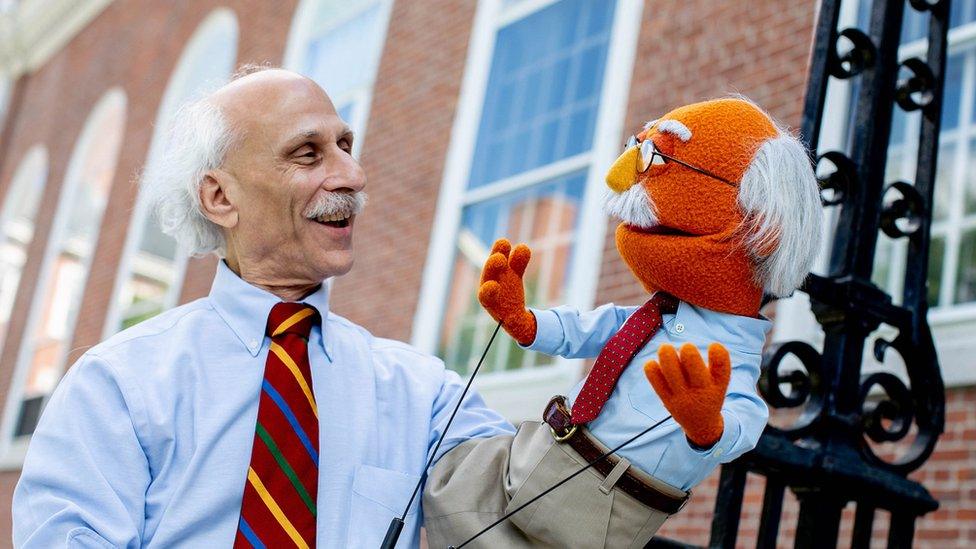
Professor Blatt was given a Muppet version of himself as thanks for his work
The real-life death of Mr Hooper
When actor Will Lee, one of the original four human cast members, died of a heart attack in 1983, executives made the bold choice to explain the concept of death to children.
Lee played the shopkeeper, Mr Hooper.
"Big Bird, when people die, they don't come back," the visibly grieving cast explained, external to the puppet, assuring him - and toddler audiences - that after people die, their memory lives on and others carry on their work.
The script had been tested on children before airing, Prof Blatt tells the BBC, to ensure they understood the message. Earlier testing had led the show to toss out other lessons, like one segment on divorce, if they found that kids were not grasping it.

The death of actor Will Lee (fourth from right) was dealt with on the show
The decision to write Mr Hooper's death into the show was "one of the first times they got dark", says TV editor Polly Conway from the group Common Sense Media, which reviews children's programmes.
"They understand that kids can handle complex subjects when the information is delivered in an age-appropriate way," she says.
"And the answer is not to never talk about death. It's to talk about death in a way that a four-year-old can understand, in a way that's backed thoroughly by child research."
Ever since that lesson on death, executives have never re-aired segments that feature Mr Hooper. "They said he was not coming back," says Prof Blatt. "And they stood by that."
An HIV-positive Muppet
To the surprise of its creators, who envisioned it as purely for American audiences, the show was quickly adapted for international viewers. Even children in conflict zones or refugee camps can watch a version of Sesame Street.
Each co-production tries to help children understand issues affecting their part of the world. In South Africa's Takalani Sesame, the character Kami is an HIV-positive orphan puppet whose mother died of Aids. In Afghanistan, Zari and her brother Zeerak model gender equality and respect for women.
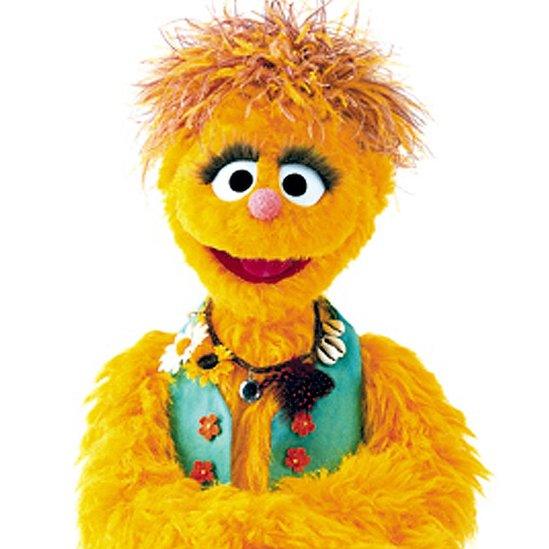
Kami is an HIV-positive puppet whose mother died of Aids
Mexico, Brazil and Germany were the first countries to air dubbed versions of Sesame Street, in the early 1970s.
Later, the executives at Sesame Workshop undertook to partner with TV executives in countries around the world to produce programming specifically for the local youth.
TV producers "bring the Sesame model, this mix of curriculum and research, to a country, and develop a new series with authentic goals relevant to the local country," explains Prof Blatt.

Sesame Street around the world
Mexico's Plaza Sésamo became the first international co-production in 1972, along with Brazil's Villa Sésamo.
Germany's Sesamstraße debuted in 1973, followed by Holland's Sesamstraat in 1976.
In Egypt's Alam Simsim, the female character Khoka seeks to empower girls to hope for great things
In 1998 a joint Israeli-Palestinian co-production launched, showing two separate communities interacting with each other
In Bangladesh's Sisimpur, characters gather around a banyan tree and in tea and sweets shops - traditional gathering places for the region
Sesame co-productions work with displaced Rohingya and Arab children who live in refugee camps
The secret to Sesame Street's (global) success

In the 2006 documentary The World According to Sesame Street, co-founder Joan Ganz Cooney compared their work to missionaries, but instead of religion, the team are "spreading tolerance and love and mutual respect".
Fifty years after its original creation, over 30 international teams custom-tailor local versions of Sesame Street content to more than 150 million children in 150 countries.
A homeless character
Starting in 2015, an online library called Sesame Street in Communities has been building on the curriculums tested on children around the world to help US neighbourhoods deal with everyday American struggles like school shootings, addiction and rapidly changing technology.
In 2018, a seven-year-old pink Muppet named Lily became the first Sesame resident to experience homelessness.
The most recently added Muppet is Karli, a foster child whose mother is battling drug addiction. According to Sesame, Karli's role is urgent as at least 5.7 million US children under the age of 11 have a substance-addicted parent in the household.
Over the years, other Muppets have taught children about autism, divorce and smart phones.
Elmo testifies before Congress
Sesame characters, and the puppeteers and executives behind them, have focused increasingly on activism, with Sesame Street residents playing roles in policy-making around the world.
Amid the child obesity epidemic in 2006, Sesame garnered praise for airing Health Habits segments designed to teach kids about diet and exercise.
Even Cookie Monster declared cookies a "sometimes food", and now teaches kids about a balanced diet.
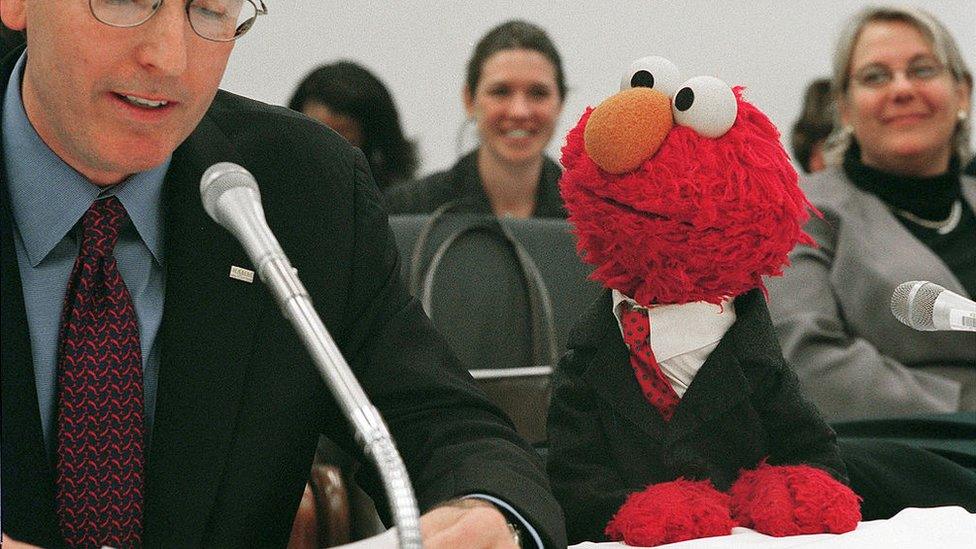
Elmo spoke to US lawmakers about music education in 2002
In 2009, former First Lady Michelle Obama visited Sesame's studios to film a segment on healthy eating.
Previous first ladies going back to Barbara Bush in the early 1990s also recorded clips with Sesame characters, both in the US and co-productions in Egypt and India.
In 2002, Elmo stepped into the public policy spotlight, when he became the first non-human or puppet to testify to Congress, according to the Washington Post.
He was invited to discuss music education by ex-Congressman Duke Cunningham, who later resigned after pleading guilty to accepting bribes.
- Published11 October 2019
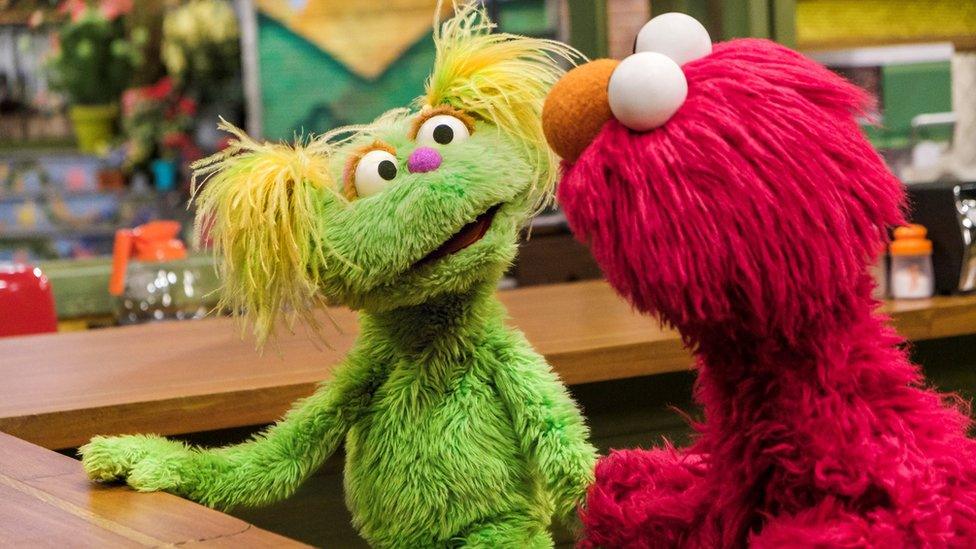
- Published4 February 2019
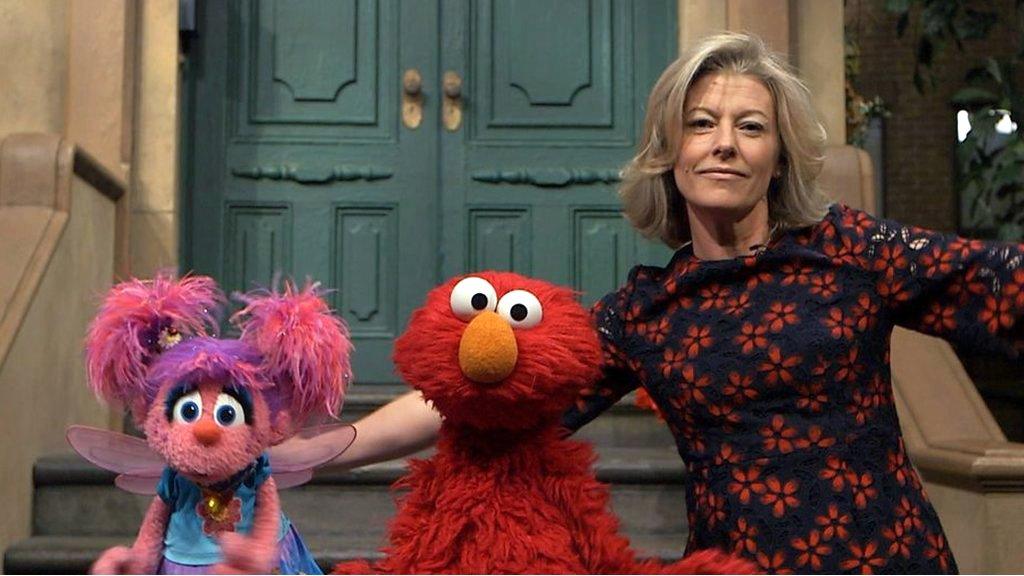
- Published14 December 2018
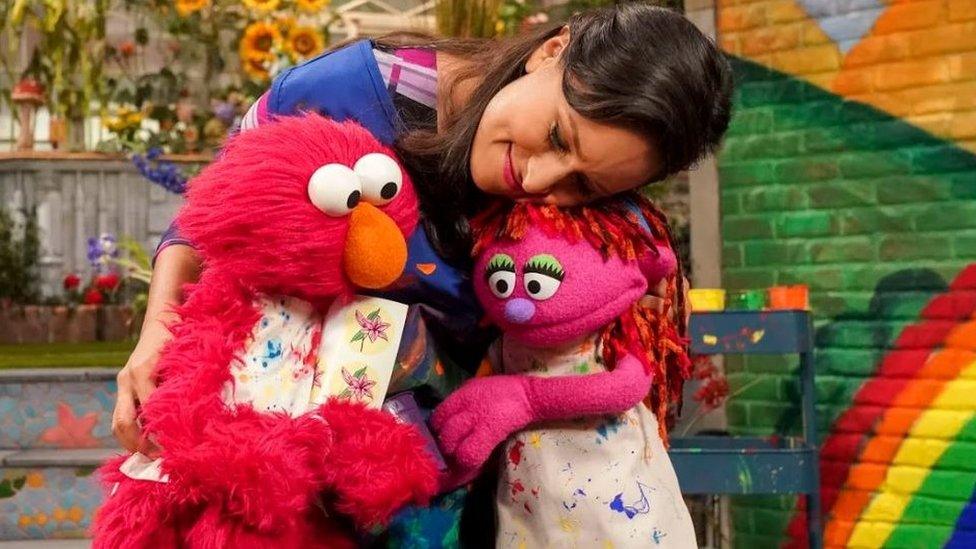
- Published18 September 2018
